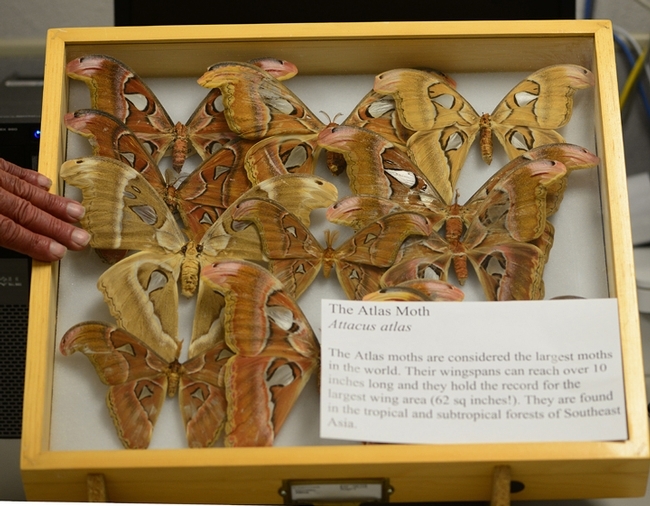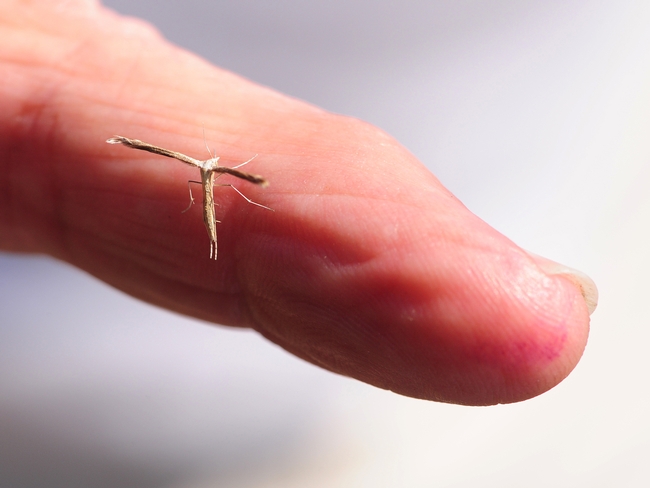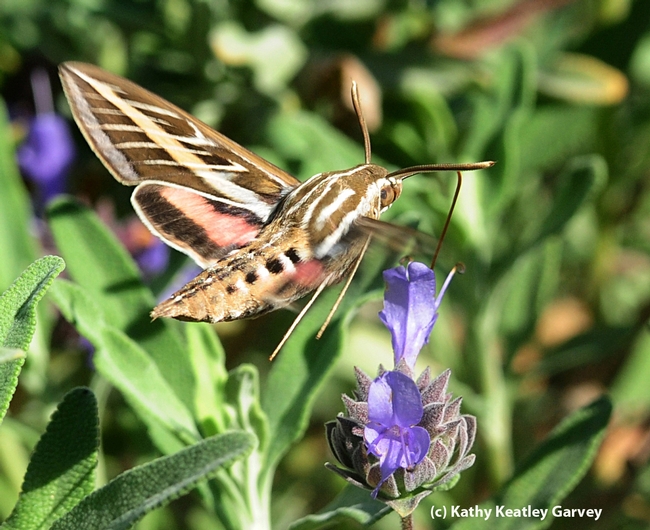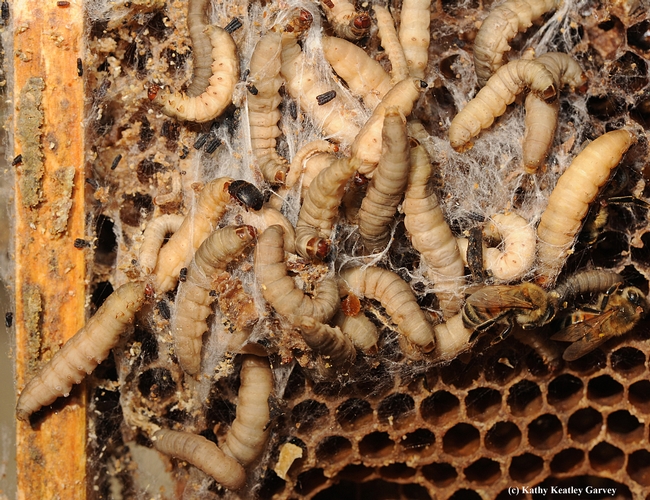Are you ready to celebrate Moth Night at the Bohart Museum of Entomology at the University of California, Davis?
Mark your calendar for 8 p.m. to 11 p.m. on Saturday, July 21.
That's when the Bohart Museum will join forces with National Moth Week, July 21-29, to celebrate the beauty, life cycles and habitats of moths. It's free, open to the public, and family friendly.
The Bohart, located in Room 1124 of the Academic Surge Building, Crocker Lane, is hosting the "Moth Night" both inside and outside the museum. You will see scores of moth and butterfly displays inside. Outside, moth light traps will be set up so you can see what moths are drawn to the blacklighting displays.
The UC Davis event is one of only two public events scheduled in California during the week; the other is in San Mateo County on July 28.
Bohart scientists will be on hand to discuss moths and answer questions. They include three Bohart associates: entomologist Jeff Smith of Rocklin, curator of the the moth and butterfly specimens; and "Moth Man" John DeBenedictis and naturalist and photographer Greg Kareofelas, both of Davis, who will staff the light traps/blacklighting displays. The best time to see the moths in the light traps is later in the evening, closer to 10, according to Lynn Kimsey, director of the museum, and Tabatha Yang, education and outreach coordinator.
"We will focus on colorful moths of the night--night rainbows if you will and the biodiversity of tropical moths," Yang said. A family craft activity is planned. Last year the family craft activity featured making moth-shaped window ornaments resembling stained glass.
Free refreshments--cookies and hot chocolate--will be served. Common Grounds, a Davis coffee shop. will be providing the large containers of hot water for the event.
One of the "oh, wow!" moths is Attacus atlas (Atlas moth), found in the rainsforests of Asia. One of the largest moths in the world, it has a wingspan that can measure 10 to 11 inches.
Last year more than 15 species landed on the blacklighting display. The first moth to arrive was the alfalfa looper moth, Trichopusia ni. The most striking: the grape leaffolder, Desmia funeralis.
Some facts about moths, from the National Moth Week website:
Why moths?
- Moths are among the most diverse and successful organisms on earth.
- Scientists estimate there are 150,000 to more than 500,000 moth species.
- Their colors and patterns are either dazzling or so cryptic that they define camouflage. Shapes and sizes span the gamut from as small as a pinhead to as large as an adult's hand.
- Most moths are nocturnal--others fly like butterflies during the day.
- Finding moths can be as simple as leaving a porch light on and checking it after dark. Serious moth aficionados use special lights and baits to attract them.
The Bohart Museum houses a global collection of nearly eight million specimens. It is also the home of the seventh largest insect collection in North America, and the California Insect Survey, a storehouse of the insect biodiversity. Noted entomologist Richard M. Bohart (1913-2007) founded the museum. It maintains a live "petting zoo," featuring Madagascar hissing cockroaches, walking sticks, tarantulas, and praying mantids. The museum's gift shop, open year around, includes T-shirts, sweatshirts, books, jewelry, posters, insect-collecting equipment and insect-themed candy.
The Bohart Museum's regular hours are from 9 a.m. to noon and 1 to 5 p.m. Mondays through Thursdays. It is closed to the public on Fridays, Saturdays and Sundays and on major holidays. Admission is free.
More information on the Bohart Museum is available on the website or by contacting (530) 752-0493 or email bmuseum@ucdavis.edu.
Attached Images:

These are Atlas moths (Attacus atlas), found in the rain forests of Asia. This moth has a wingspan that can measure 10 to 11 inches. (Photo by Kathy Keatley Garvey)

This is a pterophorid plume moth, family Pterophoridae. (Photo by Kathy Keatley Garvey)

This is a white-lined sphinx moth (Hyles lineata). (Photo by Kathy Keatley Garvey)

The wax moth enters beehives at night and lays its eggs. These are wax moth larvae (with a few hive beetles). (Photo by Kathy Keatley Garvey)